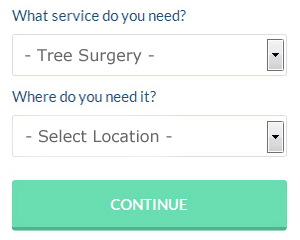March Tree Surgeons (PE15) Cambridgeshire: Adding substance, style and structure to what can quite often be a two dimensional landscape, trees are a crucial feature of properties and gardens in March. But when poorly maintained or impacted by extreme weather events such as flooding or gales, trees can be a bit of an issue. If you need to have work completed on your trees, it's the best option to consult a trained tree surgeon in March, for their advice and guidance prior to any work.
Hiring non-qualified individuals for tree work or trying to do it on your own, could cause damage to property, harm your trees, or even lead to injury or death. However, even for qualified tree surgeons who are familiar with all the risks, tree work is not entirely safe. The reality is tree surgery is among the most hazardous jobs in the UK, with an average of three deaths and a hundred and forty serious injuries a year within the profession, hence it is definitely not safe work for amateurs.
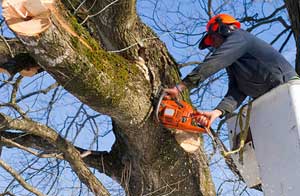
With falling trees or branches causing around five fatalities each year in the United Kingdom, a threat to life can even be posed by a poorly maintained or damaged tree. If you employ somebody to do tree work and an injury, or damage to property occurs, you could be liable for any compensation to a third-party. This is why it is essential to employ a competent tree surgeon to work on your trees in March. (The figures given were sourced from HSE UK).
FINDING A TREE SURGEON IN MARCH - There are two main professional arboricultural bodies, at least one of which an experienced March tree surgeon should be a registered member of. The membership and professional standing of any tree surgeon in March can be checked out on the websites of both the AA (Arboricultural Association) and the ISA (International Society of Arboriculture). This page allows you to check out if any particular local tree surgeon has Approved ARB Contractor status, and has membership of either of these 2 bodies.
You will be able to contact these trade bodies for mediation assistance and for guidance and help, if a problem springs up at any point during the course of the work, or after it has been finished.

You shouldn't be afraid to decline the offer of a quotation from somebody who you can't find on this directory list, because at the end of the day, it is an approved contractor that you are actually looking for. You should try to get at least 3 quotations from different companies in and around March once you are reassured of their qualifications and professional associations. Due to the risks of the work involved, you should ask the below questions, making it clear that you need to know the answers:
- Have you got documents to show that you have the proper qualifications, membership of the AA or ISA, and also a certificate for the use of a chainsaw from the NPTC? The NPTC/LANTRA certificate is required by law for any tree surgeon/operative using a chainsaw. Qualifications may include Certificates and National Diplomas in Arboriculture.
- Could I contact some former customers so that I can check the quality of your work? Doing an independent check on any recent work is always a good idea.
- What insurance cover is provided? Your tree surgeon ought to be able to produce an insurance certificate covering no less than five million pounds public liability, as recommended by the AA and ISA.
- Can you provide a quotation in writing? Verbal quotes alone aren't sufficient. Always try to get a quote in writing.
The written quote must include clear and accurate information on the work being undertaken. It should mention whose responsibility it is to remove debris, tree branches and stumps, and should also include information on any trees which might be protected in law, and the steps required to get permission to carry out work on them. Unless you're a commercial entity, you should also make sure VAT is included on the quotation. Recognising that you've got a responsibility for hiring only skilled people to work on your property and trees, is important.
PRIOR TO WORK - Finding out whether any of your trees are covered by a protection order, your preferred March tree surgeon should make sure that any work can get the go-ahead from the relevant local authorities. Even protected trees need to be maintained in order to cut back old or dead wood and ensure public safety, so discovering that a tree has protected status does not signify that work cannot still be carried out.
No less than six weeks written notice must be given to the Local Planning Authority (LPA) before any tree work can be performed, if your property in March is in a designated conservation area. This written notice isn't required if the tree trunk is less than 75 millimetres in diameter when measured at 1.5m above ground level. If the thinning or pruning of a protected tree's branches is needed in order to promote and sustain growth, notice is also not necessary.
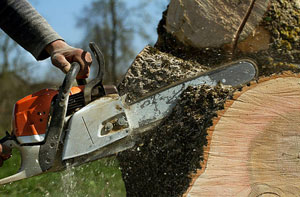
Your chosen March tree surgeon will decide on the necessary remedial treatment and how the required outcome can be achieved with safety in mind after doing a complete assessment of your trees health. Where there's any potential for falling branches and debris, a risk assessment will have to be carried out on public areas, your property, and parts of neighbouring properties that might be affected. At this point, the level of protection needed and the amount of operatives required will also be established. This is both PPE (personal protective equipment) in addition to other safety precautions to keep property and the general public safe from damage or harm.
ON THE DAY OF WORK - Before any tree felling, climbing or cutting of branches commences, barriers and safety measures should be put in place to keep unauthorised persons away from the area of work. When there is the chance of debris falling onto a public highway, it might be necessary to temporarily halt the traffic.
The tree surgeon will need different levels of protection according to the type of work being executed. When doing chainsaw work, they will at the very least be wearing protective clothing to avoid injuring the legs, torso and hands. Head and eye protection, and high-vis clothing, must be worn by all operatives involved in the work.
If any working at height is involved, associated climbing equipment and ladders will have to be deployed, and additional operatives will be there to assist in the safe removal of high branches and large pieces of tree trunk. For transporting waste materials away from the area, a truck or skip will be parked as close as possible to the area. This requirement for easy access is reason enough for informing your nearby neighbours of the work you're intending to do.
AFTER COMPLETION OF WORK - Upon completion of all the tree work, the area can be cleared of all debris, and all the waste can be taken away. Your tree surgeon will then sign off and present you with a certificate of work done, particularly where the trees are under a protection order. Any safety measures that were put in public spaces can then be taken away, with roads and paths being re-opened to the public.
If you have any problems or issues with the finished work, you should first take them up with the tree surgeon so that they can be fixed straight away. If your tree surgeon is a registered member of a professional body, you can obtain advice and guidance from the Arboricultural Association or the International Society of Arboriculture so as to arrive at an acceptable solution, if there's any further dispute or arbitration required.
Locally based March tree surgery services will most likely have the postcode PE15 and the telephone code 01354. They'll operate in March itself, along with nearby areas like Three Holes, Doddington, Murrow, Upwell, Norwoodside, Whittlesey, Westry, West End, Friday Bridge, Badgeney, Eastwood End, Town End, Outwell, Little London, Wimblington, Wisbech Saint Mary, Guyhirn, Elm, Hook, and these postcodes: PE15 0DF, PE15 0DN, PE15 0BH, PE15 5SS, PE15 0AY, PE15 5TU, PE15 5WB, PE15 5TE, PE15 0BL, PE15 0AU. Checking this should guarantee that you're accessing a local tree surgeon. March householders are able to utilise these and countless other tree related services.
For this type of service it is unquestionably better to use a certified local tree surgeon. March home and business owners can greatly benefit from the skills and dexterity that a seasoned professional can offer.
Tree Surveys March
There are a variety of reasons why you might need to have a tree survey performed, and the most commonplace is for development or property extension. As outlined by British Standards BS5837 (2012), if you're clearing a piece of land to make way for an extension to an existing property or a brand new home in March, and there are trees on that land, you might need to perform a tree survey. All tree surveys should be completed by a certified arborist or tree surgeon, regardless of whether they are being done on public or private property in March.
A good deal of information about all of the trees within a defined area will be produced by a correctly performed tree survey. For instance:
- The number of trees (those of more than 75mm diameter 1.5m from ground level).
- The life expectancy of the trees.
- Allocating a unique tree reference number for each tree.
- The diameter of each tree (measured 1.5m above ground level).
- The existence of any TPOs.
- The ages of the trees (i.e. young, semi-mature, mature, over-mature and veteran).
- The physiological and structural health of the trees.
- The species of trees.
- The height of each tree.
- The spread of branches to the West, North, East and South.
- Preliminary tree management guidelines.
You probably won't need to carry out a tree survey if you happen to be doing work on an existing home or property in March but you're not extending the footprint of the building and aren't modifying the service lines or access points.
Crown Thinning March
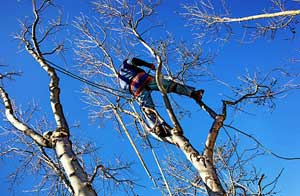
If you want to ease the stress put on specific branches caused by snow, gravity, wind, or ice, to lessen the weight of the crown, to lower the tree's wind resistance, to stop the tree uprooting in windy weather or to let more light throughout, many of the smallest secondary branches growing in the outer crown of a broad leafed tree are trimmed in a technique that's known as crown thinning. The overall dimensions and shape aren't altered by this, and the chances are it will have to be carried out on a pretty regular schedule, as more shoots grow. The all round size and structure of the tree ought not to be changed by crown thinning, and should simply result in a uniform foliage thickness surrounding consistently spread out branches. (Tags: Crown Thinning March, Crown Thin March, Tree Crown Thinning March)
The Skills to be a Tree Surgeon in March
- Patience and the ability to remain focused in times of stress.
- Have the ability to work well with your hands.
- To be meticulous and pay attention to detail.
- Have the ability to maintain, repair and use machines and tools.
- Have essential computer skills and know how to accomplish basic tasks with handheld devices.
- Be mindful of the dangers and complexities involved in all areas of the work.
- Physical skills like movement and co-ordination.
- Be professional and able to complete tasks within a set time frame.
- Customer service skills.
- Good knowledge of public safety and security.
- The cabability to work successfully others.
Air-Spading March
There are a number of problems that could make the health of your trees a concern, however issues with a tree's root system are quite often the cause. Easy accessibility to the roots of your tree is essential for a local March tree surgeon to check for soil compaction, root rot and other plausible issues.
This was sometimes somewhat problematic to achieve during the past, because while digging out the surrounding soil, the roots could easily be damaged. Many modern day tree surgeons in March use a technique known as "air spading", which employs compressed air to efficiently break up and remove compacted soil without the risk of damage to the tree's roots, or any buried utility lines that happen to be nearby.
On occasion, passing vehicles, heavy foot traffic or building work can cause the soil surrounding a tree's roots to get compacted, and this is known to have a negative impact on its health. When a tree is "stressed" it can become more susceptible to attacks by disease, pests and insects, and this stress can be caused by a lack of nutrients and water. There can also be problems with root flare, where the flare around the base of a tree gets covered in an excess of soil, causing the tissue to break down, and increasing the likelihood of root rot. Air-spading is useful for correcting this.
By forcing air into voids in the soil at a speed of twelve hundred miles per hour by means of an air compressor and an air-spading tool, the innovative air-spading process swiftly breaks up the soil without damaging harming the tree roots. As soil is directed away from the roots by the powerful air flow, immediate inspection can be accomplished. A less compact layer of wood chip mulch and fertiliser can then be applied to revive the tree, and a solution found for any problems.
Control of Vegetation

Tree care specialists do not only take care of the care and removal of trees exclusively, they will also deal with all types of vegetation which might be strangling your garden and spoiling the entire area. A lot of tree care experts will be delighted to clear away weeds, shrubs, bushes and overgrown vegetation which may be thriving around pathways, buildings, sheds, drives or walls, and generally causing a hassle. If you're going to maintain your garden effectively then this accumulating growth should be cut back regularly, and if you find you have the inclination and time this is a job you may achieve yourself if you are fit enough, or you might book in a tree surgeon to come every few months to make sure it is in shape. Vegetation control is vital if you are to have easy and safe access to all sections of your garden and if this is ignored the vegetation will pretty quickly get out of control and spoil your enjoyment of the garden. Besides anything else the garden will also look a lot better when maintained properly.
Wood Chipping March
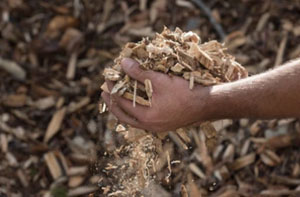
In order to process the large amount of branches, vegetation and tree limbs that are generated by their work, the majority of March tree surgeons will use wood chipping machinery. Depending on which equipment is being used, these impressive wood chipping machines can gobble up as much as 40 tonnes of material each hour, although around 5 tonnes every hour can be processed by the more frequently used devices.
Chipped down branches are naturally less cumbersome to transport, taking up far less space in the tree surgeon's vehicle or trailer, and can in addition be used for landscaping, garden walkways, wood pulp, weed prevention, biomass fuel, ecosystem restoration, mulch for gardens and cultivating mushrooms, to name but a few.
If you decide that you'd like to hang on to some of the wood chips that result from your tree surgery project, most March tree surgeons will happily let you keep them. If you've got no use for them, they'll take them away for use on other jobs, or appropriately dispose of them. As I am sure you'll appreciate by reading this write-up, tree surgeons are a reliable source for wood chippings which you can use in your garden in March, whether you actually need tree surgery or not. If you need wood chippings to be delivered then some tree surgeons will charge a fee for this service, otherwise many will let you have them without cost.
Wood chipping machinery is made by various companies, some of the best known brands include Timberwolf, Forst, T-Mech and Forest Master. (Tags: Wood Chipping Services March, Wood Chips March, Wood Chipping March, Wood Chipping Equipment March).
The Use of Chainsaws
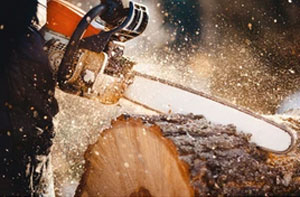
With regards to the equipment that is utilised by tree surgeons in March, the most commonly seen is the chainsaw. Despite the fact that mains electric and battery versions of chainsaw can be purchased, the most preferred by tree care professionals are powered by petrol, thanks to their ease of use and greater portability. Where large trunks and thick branches need cutting, such heavy tree work demands the use of the most robust and powerful petrol driven chainsaws.
A chainsaw is basically composed of a revolving engine-driven chain which is armed with a row of sharp teeth that effortlessly cut through the bark of a tree and the inner wood. For the various different procedures that are required, there are different types of chainsaw, rear-handled for working on the ground (must be used with two hands), pole saws for long distance pruning and hard to reach branches and top-handled for working at height (and which can be used single handedly).
Although holding onto a spinning blade whilst precariously balancing up a tree isn't the safest job in the world, it's rare to see a tree surgeon in March who doesn't use a chainsaw in his/her everyday work. In order to become a member of the Arboricultural Association, being fully trained in the safe use of chainsaws is one of the key conditions.
For anyone looking to purchase a chainsaw in the United Kingdom, there are quite a few makes on the market, but the most popular with specialist tree surgeons are Husqvarna, Makita, Stihl and Hyundai.
Problems With Tree Roots March

Certain trees have exceptionally aggressive root systems, and may cause problems when they are growing too close to your dwelling in March. Problems that may develop include damaged foundations, blocked drains and cracked patios. Extremely aggressive root systems are found in species like elms, willows, maples and sycamores.
Challenges can be avoided down the line, if you make sure you plant new trees as far as possible away from your sewerage system, pathways, patio areas and your home. If you are already experiencing problems with pre-existing trees which are growing too close to your house, you can get advice and help by contacting your local March tree surgeon.
If you want to avoid killing off the tree or seriously affecting it's health you shouldn't try and do this yourself and simply hack away at any invasive tree roots. To survive successfully, a tree will still need to get enough water and food, and a competent tree surgeon in March will know precisely which roots can be cut back, and which roots should be left in position.
Since sewage lines provide a steady source of nutrients and moisture, tree and shrub roots sometimes cause structural issues in subterranean drains. Joint failure and blockages can occur when a drainage system's joints are penetrated by minute roots, which can eventually develop into large root balls as soon as they have established themselves. To eradicate the offending tree roots, high quality root removal services will be provided by some local tree surgeons, who'll use electro-mechanical equipment, manual rod clearance or high pressure water jetting.
Removal of Tree Stumps March
When you've had a tree chopped down from your garden in March, unless previously agreed with your tree surgeon, you'll likely be left with a tree stump to deal with. You may consider leaving it to break down and rot away entirely naturally, and be quite happy to leave it as it is. However, stumps left in your garden can send out suckers in an effort to regrow, and big tree stumps can take several years to rot down, during which time they can be a trip hazard, and eyesore and the ideal hiding place for undesirable bacteria, pests and fungi.
If you decide to get rid of the stump once and for all, there are a number of ways you can achieve this, however they basically fall under 2 primary alternatives stump removal or stump grinding. In the next couple of paragraphs we will be considering the removal option rather than stump grinding.
There are in essence 3 methods of getting rid of a tree stump - burning, digging out by hand and chemical treatments. If you are intending to tackle a stump by yourself, the use of any of these tactics could be feasible. If a local tree surgeon is going to be undertaking the work, stump grinding is normally their method of choice, although eco-plugging or some other chemically based treatment might be considered.
Hand Stump Digging: Digging out a stump by hand calls for an assortment of tools such as a handsaw, a chainsaw, loppers and a pointed spade. It involves digging down to reveal the roots, cutting the roots with loppers or saws, and eventually freeing up the stump, to make it easier to pull out. Some type of cable ratchet winch may be required for the final freeing process. This tends to be laborious and tiring work, and shouldn't be tackled unless you are fit and healthy.
Chemical Stump Removers: Chemical treatment requires the use of a powerful chemical solution like Vitax SBK Stump Killer, Resolva Xtra Tough Tree Stump Killer or Roundup Tree Stump Remover. When applying any of these you should always closely follow the directions, as these chemicals can be extremely hazardous. This is not a short term fix, and it could take a few weeks for the stump to rot down entirely, after which time a spade and an axe can be used to chop it up and remove it.
Tree Stump Removal by Burning: Since it can be dangerous and could be at variance with local legislation, burning a tree stump isn't really recommended, so if you choose this technique, be very careful. The burning technique involves drilling out a few one inch holes in the stump, filling and topping them up with vegetable oil for several days until saturated. You can then pile charcoal up around the stump and set fire to it. A fire such as this should not be left unattended, and must be monitored until safe to do so. When the fire has ceased burning, you need to make sure that it is fully extinguished and cooled off, after which you will be able to dig out the roots and stump debris.
There are various other stump burning strategies, such as digging a hole underneath and setting a log or charcoal fire in the excavated space that's been made. If your stump is close to buildings, fences or other trees, you shouldn't use any of these burning methods.
(Tags: Stump Digging March, Tree Stump Removal March, Removal of Tree Stumps March, Removing Tree Stumps March).Coming Soon: Tree pruning March.
Current Tree Surgery Requests

Mr Rafferty Cross from Wittering needs to hire someone who's prepared to carry out the pollarding of a few trees along a pathway. Miss Wiktoria Shaw was trying to get a price quote from a tree surgeon in Littleport to do some after winter tree and hedge pruning in the garden of her semi-detached house. Rio Price was trying to track down a tree surgeon who can cut a tall hornbeam hedge down to a height of 5ft and remove all the debris in his garden in Castor. Ms Isla-Mae Norton was enquiring about a tree surgeon who can remove and dispose of a 30 foot monkey puzzle tree in her garden in Bury. In Balsham Mrs Humaira Hickey needs a tree surgeon to carry out some stump grinding to do away with three huge oak stumps. In Bluntisham, Leighton and Khadijah Burke are trying to find someone who'll prune a maple tree which has overgrown a neighbours garden. Mr and Mrs Gallagher need somebody who can completely remove a willow tree and a conifer, and chop back several other conifer trees in their garden in Hemingford Grey. In Hemingford Grey, Rohan and Lily Mcleod are in search of a specialist to prune their cherry trees.
Tree Surgery Tasks March

March tree surgeons can generally help you with tree planning in March, hazard assessments in March, hedge cutting, damaged tree cutting and removal, hedge reduction, staking, vegetation management March, the protection of trees from grazing, soil terravention, root flare exposure, tree removal, dead-wooding March, tree inspections, crown lifting, crown raising, tree surveys in March, crown cleaning, crown removal, crown thinning, air spading, safety inspections March, tree dismantling, tree reduction March, retrenchment pruning, pest control in March, landscape clearing March, arboriculture, woodland clearance, commercial tree care, tree reshaping in March, forestry management, shrub maintenance March, tree cutting, woodchipping in March, waste removal March and other tree surgeon services in March, Cambridgeshire. These are just a small portion of the duties that are handled by a local tree surgeon. March specialists will let you know their whole range of services.
Tree Surgery Apprenticeships - Training - Courses March

There can be few jobs that are more satisfying and rewarding than tree surgery. Upon investigation, you will find out that there are a number of avenues into employment in tree surgery including opportunities like beginning at the bottom (perhaps as a groundworker) and working towards this role, signing up for a private course, taking a university course, gaining a tree surgery apprenticeship or enrolling for a college course. When they're on offer locally, tree surgery apprenticeships in March can be applied for whilst still at school. Throughout the British Isles, there are private courses and college courses in tree surgery, and folks of all ages can apply. A variety of related university courses are available in woodland ecology & conservation, arboriculture, forestry, forest management and countryside management, and students with the appropriate qualifications (normally one to three "A" levels) can strive for higher national diplomas, foundation degrees and degrees. If you aren't excited by any of these alternatives, you might opt to undertake some voluntary work so as to get some practical tree management experience. You could try getting in contact with the Tree Council, the Forestry Commission, the Woodland Trust or the National Trust, to determine what is on offer in the March and wider Cambridgeshire area. If you arrived here trying to find tips on "how to become a tree surgeon in March", hopefully this article has proved helpful. The National Careers website is the best place to head to view much more guidance on how to become a tree surgeon.
Getting Information and Guidance
When you are talking to local March tree surgeons and arborists, you should ask them questions such as: Are you joined to a trusted professional association (i.e. The Arboricultural Association or the International Society of Arboriculture)? Can you give me a written estimate? Are you able to supply references from past customers? Do you and your workforce have the required certifications and qualifications (for tree care and the use of chainsaws)? Do you have employment and public liability insurance? Do your working practices match the BS3998 British Standard? to make certain they know exactly what they're up to and that they won't cause permanent damage to your prized trees. You should look elsewhere for a tree surgeon if you don't receive satisfactory responses to any of these basic questions.

You'll check out a directory of qualified tree surgeons in the United Kingdom on the Arboricultural Association (AA) site, and also find loads of helpful advice concerning how to pick a first-rate tree surgeon. Another website providing a "find a tree surgeon" tool (here) and a "verify tree surgeon credentials" tool, is the International Society of Arboriculture (ISA), where there is of course a lot more information about tree surgery and management. To find a basic idea of arboriculture as a career, you could visit the trusty Wikipedia "Arborist" article by going here, or the Britannica webpage here. The Government financed Trustmark website is also a great stop-off-point for obtaining trusted tradesmen, tree surgeons included.
Tree Surgeons Near March: Also find: Whittlesey tree surgeons, Norwoodside tree surgeons, Hook tree surgeons, Guyhirn tree surgeons, Murrow tree surgeons, Westry tree surgeons, Doddington tree surgeons, Outwell tree surgeons, Town End tree surgeons, Wimblington tree surgeons, Friday Bridge tree surgeons, Little London tree surgeons, Eastwood End tree surgeons, Three Holes tree surgeons, Upwell tree surgeons, Badgeney tree surgeons, Wisbech Saint Mary tree surgeons, West End tree surgeons, Elm here. All these areas are served by a local tree surgeon. March business and home owners can get estimates by clicking here.
Cambridgeshire Tree Surgeons
In Cambridgeshire you'll likewise find: Holywell tree surgeon, Stretham tree management, Swaffham Prior tree care services, Alconbury tree management, Melbourn tree surgeon, Guilden Morden tree care services, Tydd St Giles tree care services, Barnack tree surgeon, Great Gransden tree surgeons, Northborough tree surgeons, Northborough tree care services, Over tree care services, Bluntisham tree surgeons, Papworth Everard tree care, Earith tree surgery, Wilburton tree management, Foxton tree surgeon, Whittlesey tree care services, Northborough tree surgeon, Meldreth tree care services, Stilton tree care, Bassingbourn tree management, Thriplow tree surgery, Swaffham Prior tree care, Burwell tree management, Little Paxton tree surgeons, Little Thetford tree care, Barnack tree surgery, Glinton tree surgery, Downham tree care services. In every area of Cambridgeshire you should be able to locate tree surgeons who will offer you high quality services for all your tree care needs. If you're unable to find the ideal tree surgeon in March itself you will no doubt be able to uncover a decent one near at hand.
Tree Care Services March
- March Arboriculture
- March Hedge Trimming
- March Tree Care
- March Air-Spading
- March Stump Removal
- March Woodland Management
- March Tree Planning
- March Woodchipping
- March Soil Terravention
- March Tree Topping
- March Tree Removal
- March Crown Reduction
- March Tree Reduction
- March Stump Grinding
More March Trades: Of course, when you're having tree surgery carried out in March, Cambridgeshire, you'll likely be in need of other garden related services, and along with a tree surgeon in March, Cambridgeshire, you could additionally need planting services in March, garden pond builders in March, garden shed installers in March, garden planning and design in March, decking fitters in March, patio installers in March, garden clearances in March, hedge shaping in March, landscapers in March, artificial grass installation in March, rubbish removal in March, fencing contractors in March, driveways in March, soil irrigation in March, grass cutting in March, SKIP HIRE in March, and other different March tradespeople.
Tree Surgeons Around March: In the last few months, people in the following March roads have sent in enquiries about tree surgery: Sheppersons Grove, Truman Avenue, Chestnut Crescent, Cross Road, Smiths Drive, Dobson Walk, Camargue Drive, Badgeney Road, Cricketers Way, Chapel Gardens, St Johns Road, Causeway Gardens, Cambridge Row, Cavalry Park, Springfield Avenue, Skeifs Row, Swallow Way, Deptford Close, Sycamore Close, Chapel Street, Silt Road, Short Drive, Darthill Road, Butt Avenue, College Gardens, Smiths Chase, Boundary Drive, Ash Tree Close, Stevens Way, along with these nearby postcodes PE15 0DF, PE15 0DN, PE15 0BH, PE15 5SS, PE15 0AY, PE15 5TU, PE15 5WB, PE15 5TE, PE15 0BL, PE15 0AU. These locations recently saw activity by a qualified tree surgeon. March householders benefited from competent and top quality tree surgery services in every case.
 Tree Surgeon March
Tree Surgeon March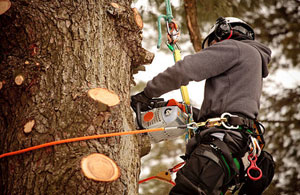 Tree Surgeons March
Tree Surgeons March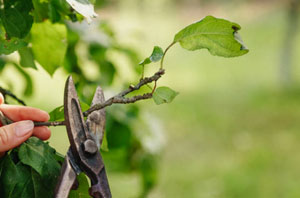 Tree Surgery March
Tree Surgery MarchTree Surgeon Jobs March: Find March tree surgeon jobs here: March Tree Surgeon Jobs
To find local information regarding March, Cambridgeshire click here
More Cambridgeshire Tree Surgeons: Cambridgeshire tree surgeons: Chatteris, Huntingdon, Ely, Whittlesey, Cambridge, Wisbech, Peterborough, St Ives, March and St Neots.
Tree Surgery PE15 area, phone code 01354.
More Trades: Gate Fitters - Gutter Cleaning - Tilers - Carpet Fitters - Carpenters
Tree Removal March - Tree Management March - Tree Surgery March - Tree Surgeons March - Crown Reduction March - Tree Care March - Tree Pruning March - Stump Removal March - Tree Surgeon Near Me





